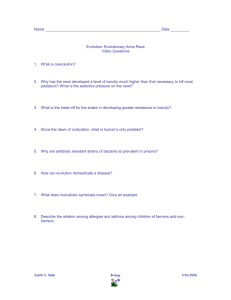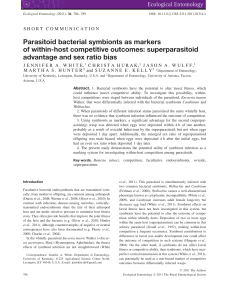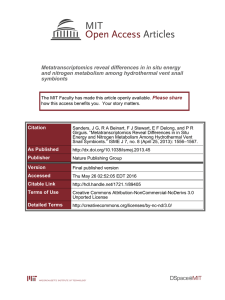Marine symbiosis Type of symbiotic associations Evolution by
advertisement
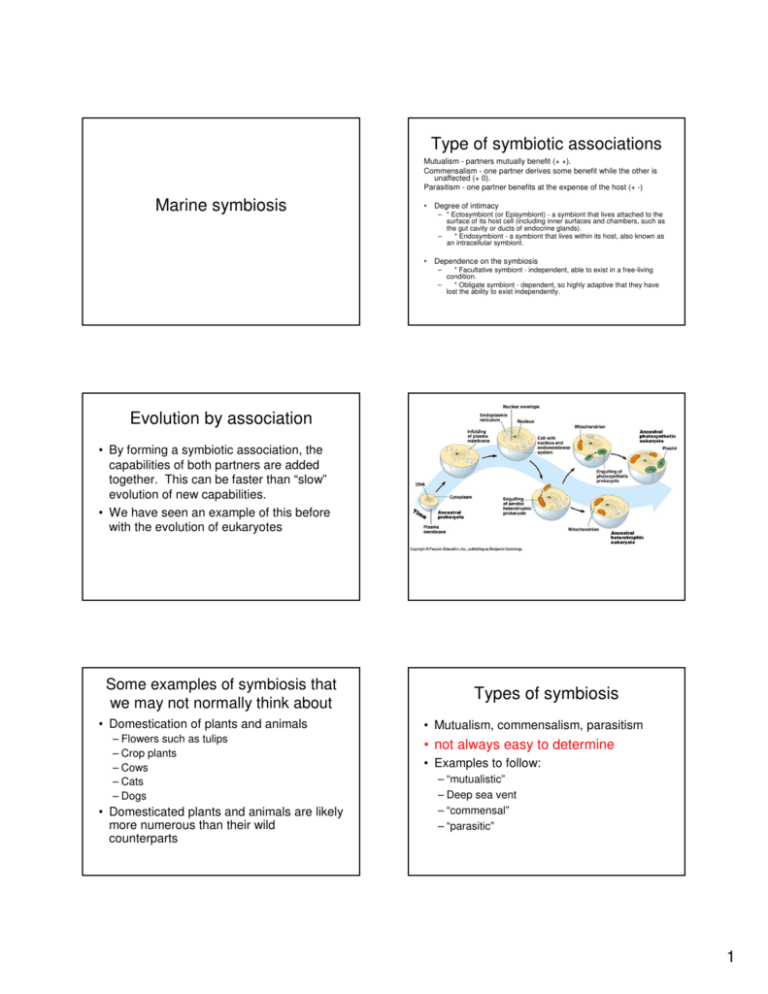
Type of symbiotic associations Mutualism - partners mutually benefit (+ +). Commensalism - one partner derives some benefit while the other is unaffected (+ 0). Parasitism - one partner benefits at the expense of the host (+ -) Marine symbiosis • Degree of intimacy – * Ectosymbiont (or Episymbiont) - a symbiont that lives attached to the surface of its host cell (including inner surfaces and chambers, such as the gut cavity or ducts of endocrine glands). – * Endosymbiont - a symbiont that lives within its host, also known as an intracellular symbiont. • Dependence on the symbiosis – – * Facultative symbiont - independent, able to exist in a free-living condition. * Obligate symbiont - dependent, so highly adaptive that they have lost the ability to exist independently. Evolution by association • By forming a symbiotic association, the capabilities of both partners are added together. This can be faster than “slow” evolution of new capabilities. • We have seen an example of this before with the evolution of eukaryotes Some examples of symbiosis that we may not normally think about • Domestication of plants and animals – Flowers such as tulips – Crop plants – Cows – Cats – Dogs • Domesticated plants and animals are likely more numerous than their wild counterparts Types of symbiosis • Mutualism, commensalism, parasitism • not always easy to determine • Examples to follow: – “mutualistic” – Deep sea vent – “commensal” – “parasitic” 1 mutualistic Algal-invertebrate symbiosis Examples already discussed: Algalinvertebrate symbiosis Some considerations • • • • • Sea anemones Corals Upside down jellyfish Lake Palau jellyfish Tridacna clams • The algal symbionts are usually acquired from the environment, and usually one species of algae is always present in a given host species. How does the host recognize the symbiont? • Foreign cells in animals are usually destroyed. Why aren’t the symbionts destroyed? • The algae are somehow induced to release sugars and amino acids to the host. How? • What does the host give to the algae? Coral bleaching • Not clear if it is due to pollution, temperature, disease? • Corals lose their symbionts and die. Chemoautotrophic bacteriainvertebrate symbiosis 2 Symbiont transmission Riftia pachyptila • Often “horizontal” –symbionts from environment • In some cases it is “vertical” –symbionts are in the eggs – clam symbioses such as Solemya shipworms • Actually bivalves burrow in wood • Wood is poor in nitrogen • Bacteria in the gill fix N2 gas into amino acids Sea slug Elysia • The juvenile is brown with red pigment spots prior to feeding. At this point, the animal has no chloroplasts. When it feeds on the alga Vaucheria litorea, it will turn green, by putting the algal chloroplasts into its own gut cells. Is this mutualistic? • http://www.youtube.com/watch?v=yQNIpW0LlsU Deep sea vent 3 Branchipolynoe parasitic scaleworm Alvinella pompejana Alviniconcha • Has chemoautotrophic bacteria in its gills • Big snail the size of a billiard ball Scaly foot gastropod • Has iron scales secreted by the foot. • Gills have chemoautotrophic bacteria symbionts Yeti crab • Has hairs that are covered with bacteria may be involved in nutrition • http://www.youtube.com/watch?v=fPdXqS YbOk8 commensal 4 Clownfish/sea anemone Cleaner shrimps Decorator crab Pea crabs • http://www.youtube.com/watc h?v=fL10l3JRoT0 • It is usually found covered in seaweed that acts as camouflage, attached to the hooks on its shell. It attaches the algae or seaweed with a secretion that becomes adhesive when hardened. This habit gives the seaweed decorator crab its common name. • Small crabs often found in oysters and other bivalves tongue-eating isopod (Cymothoa exigua). • isopod gets into host’s mouth and grabs onto tongue with seven hooklike legs. Over time, the tongue degenerates, leaving the parasite hanging on to its stub. • This change actually has very little effect on the fish, because it can still hold prey with the parasite. The isopod doesn’t just replace the tongue physically, it also replaces it functionally. Whale barnacle Coronula diadema • • • • Barnacles able to ‘smell’ a nearby whale when ready to settle down. the whale’s skin is drawn into the spaces between the plates, permanently stitching the barnacle’s shell to the whale. barnacle may only live for one to two years, the whale carries the shell around until it can find a way to scrape it off. lips, the long grooves of the throat and the genital region 5 Remora –usually attaches to sharks, rays, turtles parasitic Sea lice • Parasitic copepods on hammerhead shark Roundworms in fish muscle eye maggot • The eye maggot of sprat Lernaeenicus sprattae (Sowerby, 1806), a parasitic copepod on its host sprat (Sprattus sprattus) from Southern North Sea Parasitic castration • Common parasitic castrators include larval trematodes in snails, and isopod and barnacle parasites of crustaceans. • an individual parasitic castrator can usurp all the reproductive energy from a host 6
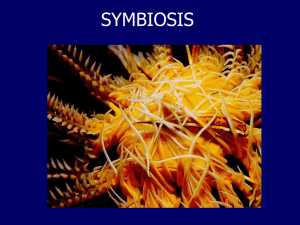
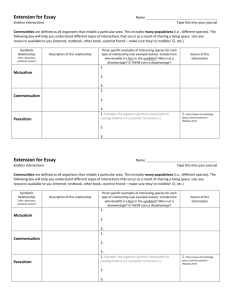
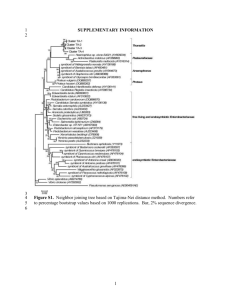
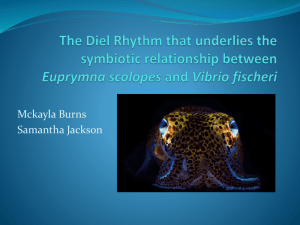
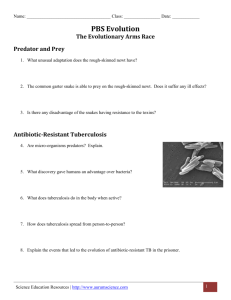
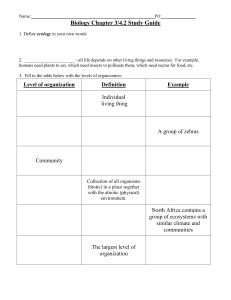
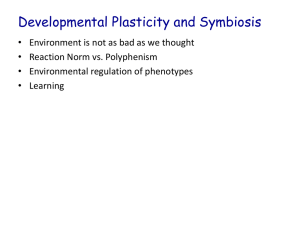
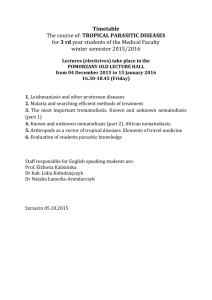
![Symbiosis[1]](http://s2.studylib.net/store/data/005449742_1-2c9de7b7b178f521480e9109673f342e-300x300.png)
